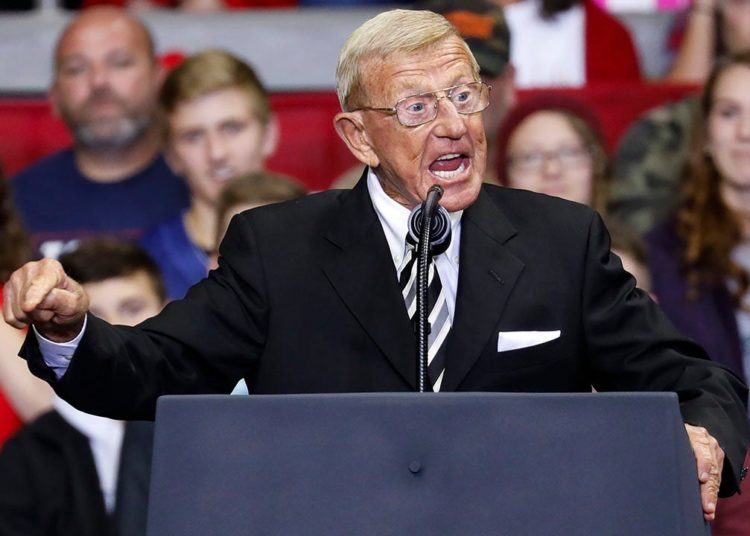The seminary sits on the site of an old apple orchard that Clement Clarke Moore, the author of the poem that begins, “’Twas the night before Christmas,” gave the church in 1819. The first building went up in 1827, followed by a ring of others on what is now a block of extremely valuable land in the Chelsea neighborhood of New York City.
Now, the General Theological Seminary, the oldest seminary of the Episcopal Church and a quintessentially New York institution, is beginning a new chapter. Its 13 Collegiate Gothic buildings and leafy quad are to become a satellite campus of Vanderbilt University, the elite academic institution based in Nashville.
In September, Vanderbilt finalized a $44 million, 99-year-lease with the seminary, announcing that it will use the campus for two academic programs: a residential program for about 100 undergraduates for a semester of their junior or senior years, and a graduate program offering a Master of Science in business and technology.
For Vanderbilt, the move marks the first stage in an ambitious plan to build satellite campuses in several U.S. cities, taking advantage of what it calls its financial strengths to expand offerings when many of its peer institutions are tightening their belts.
“We call it a study away,” Daniel Diermeier, Vanderbilt’s chancellor, said in an interview last week, as he described the concept shaping the new campuses in Manhattan and elsewhere. If students have a career interest, such as in finance or the arts, that is better pursued somewhere other than Nashville, Vanderbilt wants to offer “the opportunity for our students to be fully emerged into the environment there, and explore, whether it’s projects or internships or classes that are connected with that.”
On Tuesday, Vanderbilt’s plan surmounted a key hurdle, receiving approval from the New York State Board of Regents, which oversees schools in the state, to open as soon as next fall. Now, a potentially bigger challenge looms.
To prepare for its students, and meet commitments it made to the seminary, Vanderbilt will undertake a renovation of the seminary’s 19th- and 20th-century buildings, some of which have fallen into considerable disrepair over the last few decades as enrollment in the seminary plummeted.
Over the centuries, the red brick seminary, which occupies the full block between Ninth and 10th Avenues and West 20th and 21st Streets, educated more than 7,000 candidates for the priesthood, who prayed in the soaring Chapel of the Good Shepherd and took their meals in the vaulted refectory.
But as interest in the priesthood as a vocation declined, the seminary became far too large to manage. The seminary has sold off several structures, which became luxury condos and a hotel, but the cash infusion was not enough. By 2021, the seminary had only nine students, with an incoming class of three, one of whom was a transfer student.
“That was a pretty big wake-up call for the trustees,” said the Rev. Michael W. DeLashmutt, who was brought in by the seminary four years ago as the acting dean and president, to guide the seminary toward a viable plan for the future.
An earlier renovation cost tens of millions of dollars and led to a new library on the ground floor of a private condo building that was built along Ninth Avenue. Even so, in 2021, an engineering assessment found that the seminary required $32 million to $35 million in necessary upkeep on equipment, buildings and infrastructure, mostly in long-deferred repairs on roofs, windows and exteriors, Mr. DeLashmutt said.
That estimate did not cover modernizations including the new boilers, elevators and air-conditioning systems that Vanderbilt says it will install in coming years.
A tour of the campus last week showed the scale of the challenge. Vanderbilt had just hosted a lawn party for 400, under white tents on the seminary quad, to thank alumni donors and introduce itself to the neighborhood.
But inside the Chapel of the Good Shepherd, which Vanderbilt will repair as part of its agreement with the seminary, garbage cans captured rainwater from a leaking roof, and a musty smell pervaded. Across the quad, a classroom’s plaster and flooring were cracked.
By 2027, the goal is to have built out the infrastructure so that all the buildings have central heating and cooling, said James Kellerhouse, who has been hired by Vanderbilt as an assistant vice chancellor to shepherd the Chelsea project to completion.
“Oh, it’s crazy,” he said of the current boilers, as he led a tour of the campus. “It’s Old New York.” Accessibility is another major challenge, with ramps or elevators needed for buildings accessible only by stairs.
In making the match with Vanderbilt, the General Theological Seminary appears to have found the ticket to its survival. The lease, the exact terms of which remain confidential, allows the seminary to maintain a presence on the campus. Instead of its former residential program, it began offering a hybrid Master of Divinity program in 2022 that turned out to be more in line with what modern candidates for the priesthood were seeking.
The program’s 55 students take mostly online courses, but under the Vanderbilt lease agreement, they will still be allowed to live on campus for six weeks a year, in May, June and August, to maintain their connection with the seminary’s historical home, Mr. DeLashmutt said.
Tuition for the candidates in the program is now zero. It has become the largest priest training program in the Episcopal Church in the United States.
“We went from a seminary that was on the precipice multiple times in the last 30 years to now being safe and secure with a program that’s oversubscribed,” he said. “It is a real turnaround story.”
Vanderbilt’s capital fund-raising campaign, called Dare to Grow, has raised about $3.5 billion for a variety of efforts including financial aid, faculty recruitment and campus expansions, including an even more ambitious project that the university hopes to open in West Palm Beach, Fla. Vanderbilt has about 8,000 graduates in New York state, the most in any region outside of Tennessee.
About 11 percent of the current student body is from New York, Mr. Diermeier said, a share that has gone up in recent years. There has been particular interest from Jewish families concerned about the tenor on many Ivy League campuses following the Oct. 7, 2023, attack on Israel, he said.
“It’s our biggest market now, and there’s a tremendous amount of enthusiasm in the New York community in general,” he added.
It is still relatively unusual for a university from another state to have a full campus in New York City. Northeastern University, of Boston, is in the process of merging with Marymount Manhattan College on the Upper East Side. Carnegie Mellon University has a small extension campus in the financial district. Cornell built a tech campus on Roosevelt Island, but it is an in-state institution.
In addition to tuition and donations, Vanderbilt in New York City will bring in money through venue rentals, as the seminary did. Hosting a wedding beneath the high ceiling of the refectory, which resembles a Hogwarts dining hall, can cost $22,000 in rental fees, Mr. Kellerhouse said.
Though he would not disclose the budget the school has allotted to the Chelsea project, Mr. Diermeier indicated that he was undaunted by its scale.
“We have to do some renovation,” he said, but given the university has about $2.6 billion in annual revenue, “it’s not a significant investment or cost for the university at this point.”
Sharon Otterman is a Times reporter covering higher education, public health and other issues facing New York City.
The post Aging N.Y.C. Seminary’s Prayers Are Answered With a Lease by Vanderbilt appeared first on New York Times.




